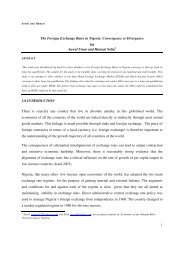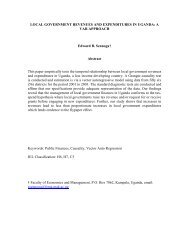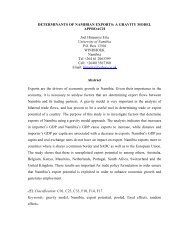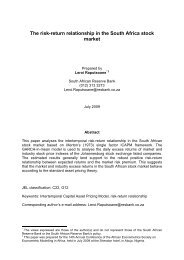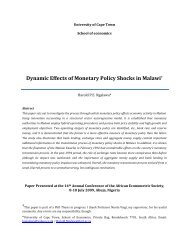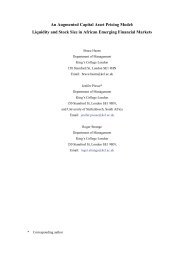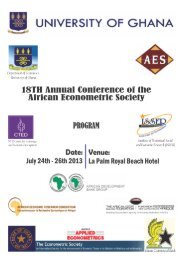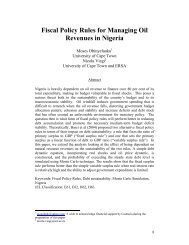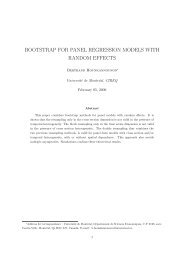Explaining Polarization and its Dimensions in Nigeria - African ...
Explaining Polarization and its Dimensions in Nigeria - African ...
Explaining Polarization and its Dimensions in Nigeria - African ...
You also want an ePaper? Increase the reach of your titles
YUMPU automatically turns print PDFs into web optimized ePapers that Google loves.
several arguments <strong>in</strong> favour of education as a key factor <strong>in</strong> poverty - reduc<strong>in</strong>g <strong>in</strong>itiatives <strong>in</strong> <strong>Nigeria</strong><br />
(Aromolaran, 2002). In this study, no education has the highest value of deprivation to surplus<br />
ratio of 4.6 compared to tertiary education level with the ratio value of 1.1. This affirms the notion<br />
that people without education are more vulnerable to poverty than people with education. Thus, it<br />
is worth not<strong>in</strong>g that the poor can still constitute a formidable population to raise the level of<br />
polarization <strong>in</strong> the country. This study reveals the second highest relative contribution of 7 per<br />
cent, (0.07) of non-educated population to polarization <strong>in</strong> <strong>Nigeria</strong>, after secondary school level,<br />
which accounts for about 15 per cent (0,15). Table 5 reveals that the number of unemployed,<br />
students, retired <strong>and</strong> disabled people contribute more to the level of polarization (0.38) than<br />
ga<strong>in</strong>fully employed people. We can therefore safely say that employment creat<strong>in</strong>g <strong>in</strong>itiatives <strong>and</strong><br />
effective social policies will go a long way <strong>in</strong> reduc<strong>in</strong>g sense of diversity among these groups.<br />
16



